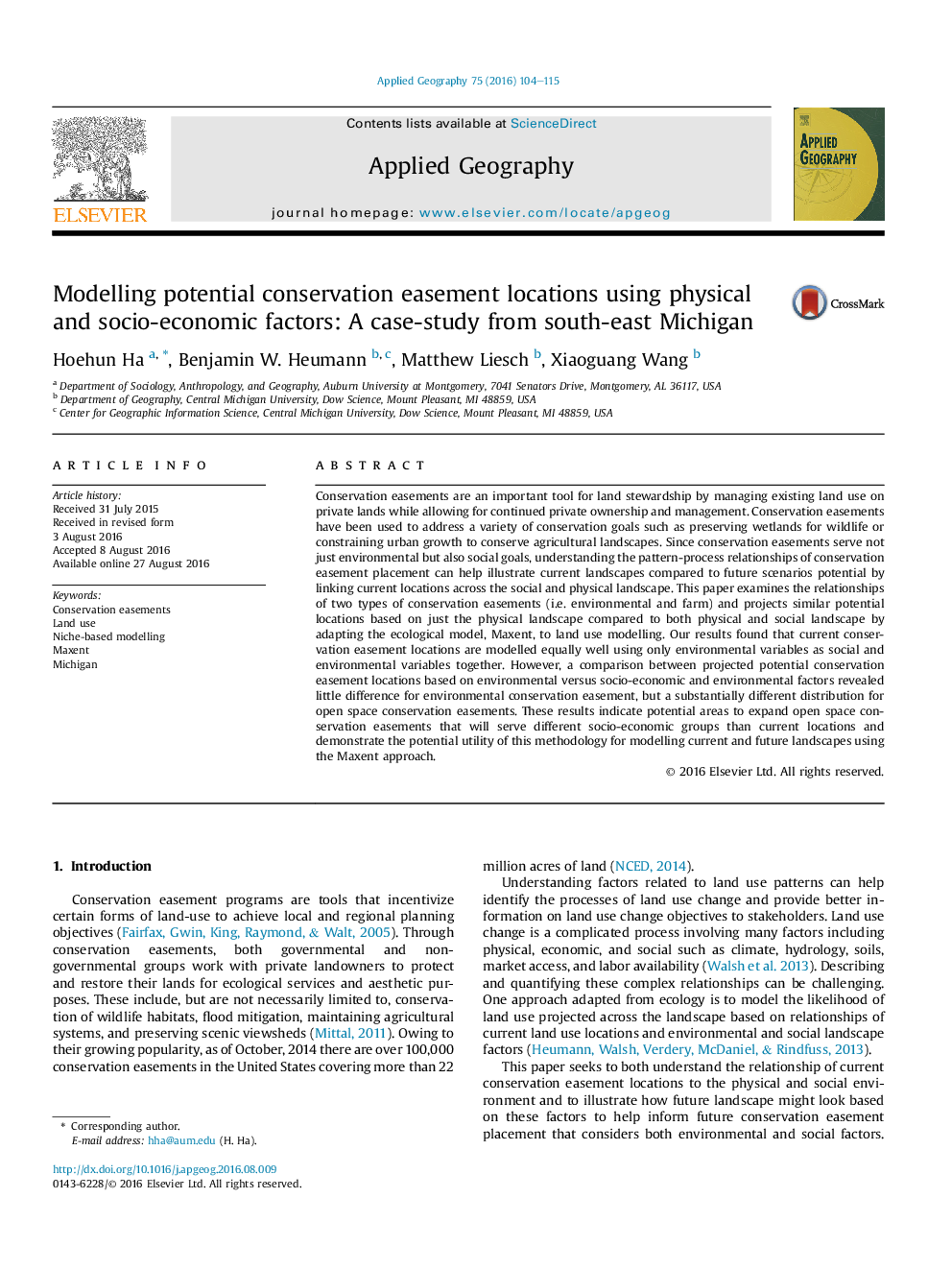| کد مقاله | کد نشریه | سال انتشار | مقاله انگلیسی | نسخه تمام متن |
|---|---|---|---|---|
| 6458464 | 1421042 | 2016 | 12 صفحه PDF | دانلود رایگان |
- We examine the relationships of two types of conservation easements.
- We project similar potential locations based on only physical landscape.
- We compare it to both physical and social landscape by adapting the ecological model.
- There is little difference for environmental conservation easement.
- There is substantially different distribution for open space conservation easement.
Conservation easements are an important tool for land stewardship by managing existing land use on private lands while allowing for continued private ownership and management. Conservation easements have been used to address a variety of conservation goals such as preserving wetlands for wildlife or constraining urban growth to conserve agricultural landscapes. Since conservation easements serve not just environmental but also social goals, understanding the pattern-process relationships of conservation easement placement can help illustrate current landscapes compared to future scenarios potential by linking current locations across the social and physical landscape. This paper examines the relationships of two types of conservation easements (i.e. environmental and farm) and projects similar potential locations based on just the physical landscape compared to both physical and social landscape by adapting the ecological model, Maxent, to land use modelling. Our results found that current conservation easement locations are modelled equally well using only environmental variables as social and environmental variables together. However, a comparison between projected potential conservation easement locations based on environmental versus socio-economic and environmental factors revealed little difference for environmental conservation easement, but a substantially different distribution for open space conservation easements. These results indicate potential areas to expand open space conservation easements that will serve different socio-economic groups than current locations and demonstrate the potential utility of this methodology for modelling current and future landscapes using the Maxent approach.
Journal: Applied Geography - Volume 75, October 2016, Pages 104-115
